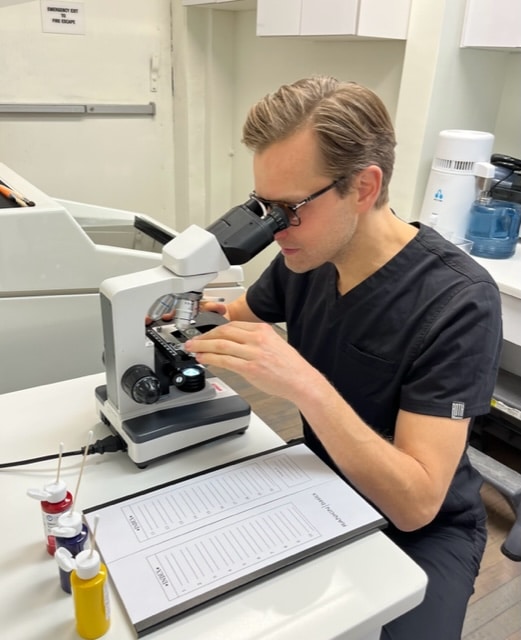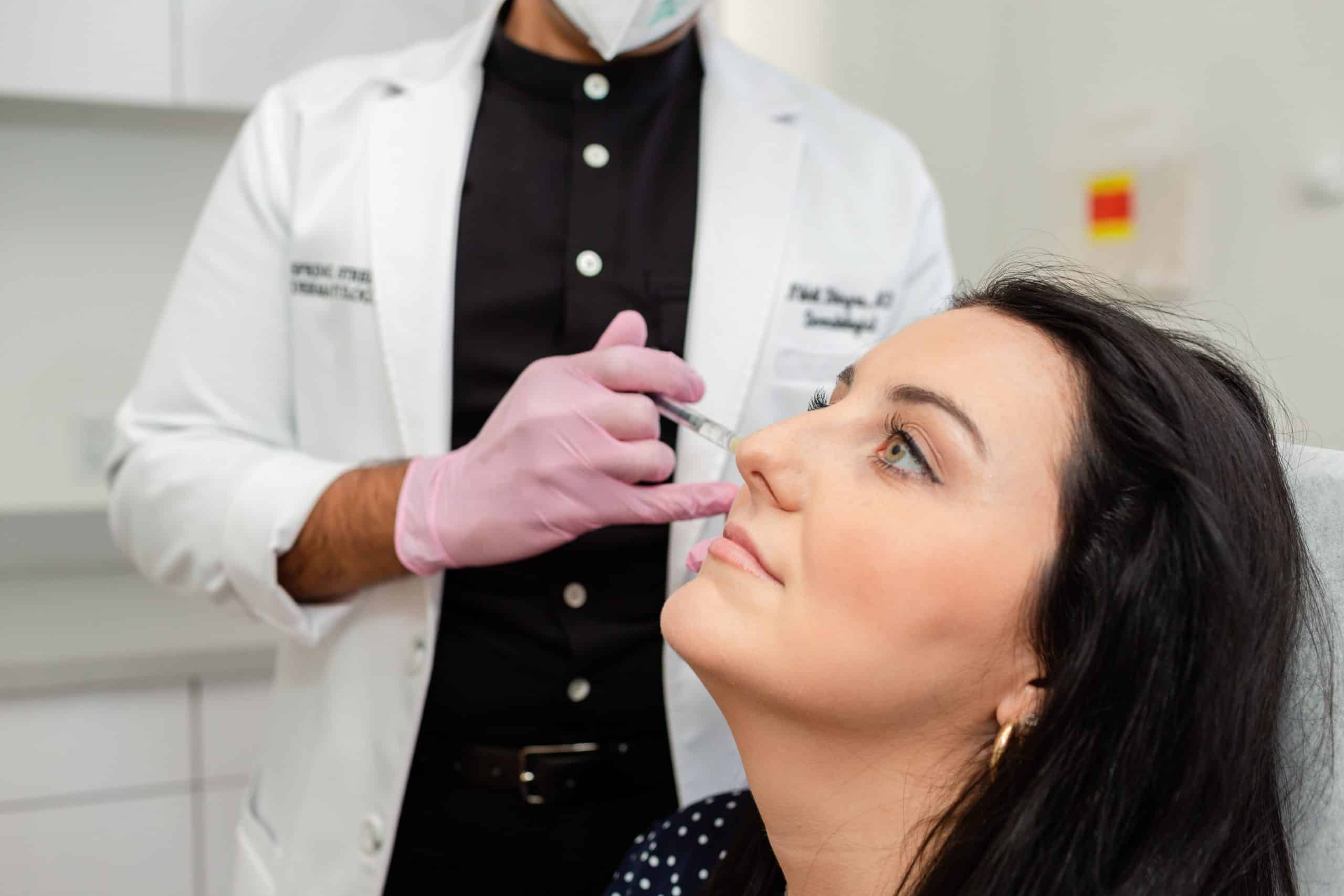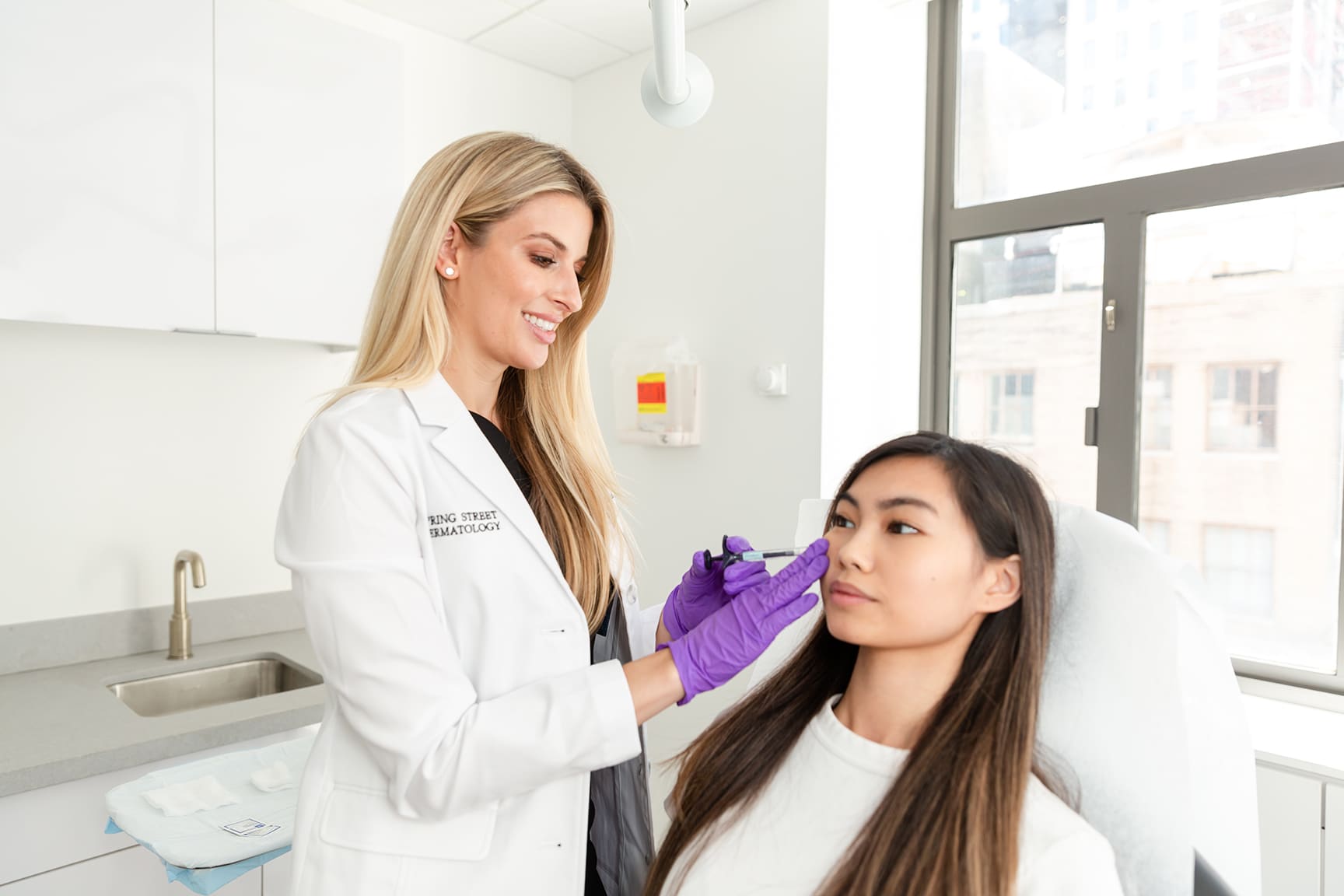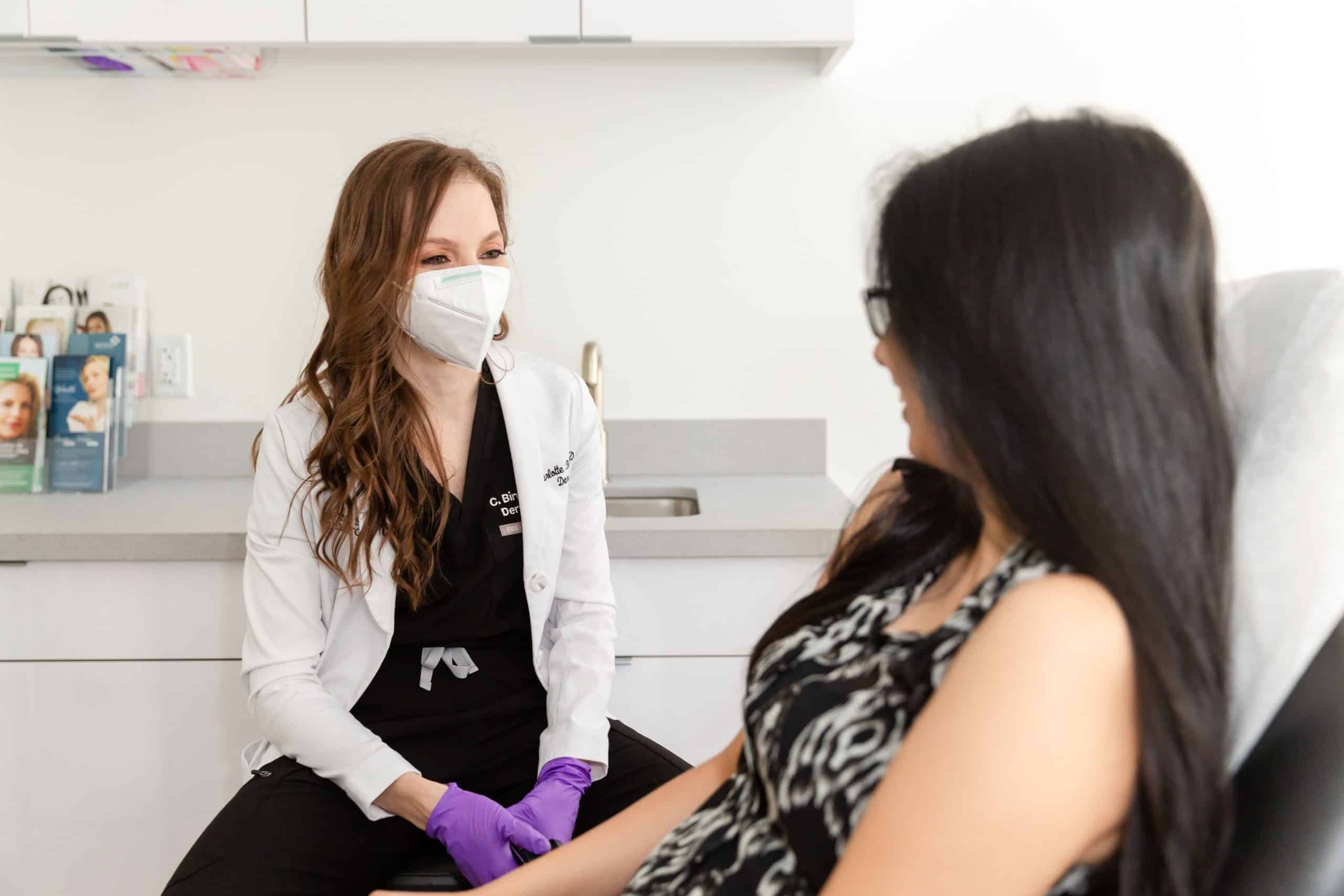
Homepage / Medical Dermatology Treatments /Mohs Surgery
Mohs surgery
Mohs surgery is a micrographic treatment for specific types of skin cancer, including basal cell carcinoma, squamous cell carcinoma, and some types of melanoma.
- Downtime: Varies based on extent of procedure
- Pain Level: Mild
- Results Duration: Long-lasting
Treats:
Certain types of skin cancer
Side Effects:
Swelling, mild discomfort, bleeding at the treatment area
Location:
Can be used on the face or body to preserve healthy skin while removing malignant tissue
Follow Up:
Routine appointments for several months
How Performed:
Thin layers of the skin are removed until healthy tissue remains
Preparation:
Avoid medications that can increase bleeding. An anesthetic is applied to the treatment area.
Procedure Type:
Surgical excision
Expected Outcome:
Removal of cancerous skin cells while preserving healthy skin
Onset:
Healing can take several weeks or months
What is Mohs surgery?
Mohs surgery treats skin cancer on the face and body. It is one of the most common surgical procedures performed in the United States. It is also one of the most precise methods of removing all cancerous tissue while leaving as much healthy tissue behind as possible.
The procedure was developed in the 1930s and later refined and named the Mohs technique in the 1970s. This in-office procedure can remove thin layers of malignant cells quickly and efficiently, leaving patients at peace and cancer-free. Basal cell carcinoma (BCC) and squamous cell carcinoma (SCC) are two of the most common types of skin cancers that can be effectively removed with the procedure. Mohs can also treat:
- Skin cancer with undefined borders
- Recurring skin cancer after treatment
- Skin cancers near scar tissue
- Some types of Melanoma
The procedure can be used on delicate areas, including the following:
- Scalp
- Forehead
- Eyelids
- Ears
- nose
- Lips
- Fingers
- Genital areas
Who is a candidate for Mohs surgery?
Patients with BCC or SCC are frequently advised to have Mohs surgery. Since this procedure targets skin cancer, candidates for Mohs surgery must have cancer confined to a particular area of the skin. For example, a patient cannot have Mohs surgery if the cancer has spread to other body parts, such as the lungs, lymph nodes, liver, bones, or brain. Patients with BCC or SCC may also be a candidate if the cancer is:
- Aggressive or in a large area
- In an area with minimal surrounding tissue, like the eyelid or scalp
- Recurring from a previous treatment
Benefits of Mohs Surgery
Removes all the cancer cells in an area
Leaves behind healthy tissue
Performed as an outpatient procedure
Requires a small incision with less scarring and less reconstructive surgery
Minimal discomfort with anesthetics and simple recovery
Success rates are 99% compared to other methods of removal
How does Mohs surgery work?
Mohs surgery removes thin layers of cancerous skin cells while preserving surrounding tissue and healthy cells. Once a layer is removed, it is immediately analyzed under a microscope to determine if all the malignant cells were removed. The process continues until all cancerous tissue has been eradicated.
In Mohs surgery, doctors remove the entire surface of the cancerous area of the skin instead of just the abnormal hyperkeratinized cells in the cancerous area. This helps the cancer cells die off more quickly, reducing the chance of spreading the cancer to other body parts. It is only used for localized types of skin cancer to avoid more extensive types of removal.
Recovery from Mohs Surgery
Mohs surgery recovery can take up to 4-6 weeks for the wound to heal and approximately 6-12 months for the scar to heal. The procedure leaves an open wound on the skin, which should be covered for at least 24-48 hours post-surgery. If stitches were used, sutures should be removed one to two weeks after surgery. Patients can expect to feel tired and should plan to avoid strenuous activities for several days. Your expert dermatologists will provide post-care instructions, which can include ice packs and antibiotics to help prevent discomfort and infection.
If scarring is a concern after Mohs surgery, we also offer cosmetic treatments using lasers or RF microneedling to diminish the appearance of scars and enhance the aesthetic result.
Schedule your Mohs Surgery in NYC today
Mohs surgery is an advanced treatment for skin cancer that produces the best medical and cosmetic results possible. To learn more about Mohs surgery or any of our skin cancer screening options, schedule an appointment online or contact Spring Street Dermatology in SOHO and Uptown, NYC.
Mohs Surgery Questions & Answers
Q: Why should I choose Mohs surgery for my cancer removal?
A: Mohs is a very effective treatment method for certain types of cancer. The precise method removes cancerous cells, leaving patients cancer-free, while preserving healthy tissue.
Q: How long will my Mohs surgery take?
A: The time can depend on the size of the treatment area and the stages required to remove all the cancerous cells. Most patients can expect two to four hours for a procedure, while others may need more or less time. The entire process is completed in one visit, and patients will leave cancer-free.
Q: Is Mohs surgery painful?
A: Patients are given a topical or local anesthetic depending on the size of the treatment area. Many patients find the procedure to be comfortable and nearly painless with an anesthetic.
Q: Can I go home after my procedure?
A: Yes. Mohs is an in-office procedure that allows patients to return home the same day. Your board-certified dermatologist will provide you with proper after-care instructions and follow-up requirements.
Q: Will Mohs surgery get rid of my cancer?
A: Mohs surgery has the highest cure rate of cancer removal methods, and the chance for recurrence is less than 1%. If the area has been treated previously, there is a 4% chance of recurrence.
Q: Are there alternatives to Mohs surgery?
A: Although Mohs is the preferred treatment for skin cancers, there are alternative methods for excision, including burning or freezing the malignant cells.
Next, Read About
Dysport
Frowning, squinting, and smiling leave behind fine lines and wrinkles over time. Neuromodulators can be injected directly with a tiny needle into the muscles responsible and work by reducing crease-causing contractions.
Dermal Fillers
As we mature, loss of volume leads to wrinkles, prominent nasolabial folds, thinned lips, exaggerated jowls, and marionette lines. The natural deterioration of underlying bone and soft tissue leaves a hollowed, aged appearance. Fillers injected below the skin surface can correct age-related volume loss.
Thousands of New Yorkers Trust
Spring Street Dermatology
Contact Us
SOHO
75 Spring Street, Floor 2
New York, NY 10012
Monday - Friday: 8:00 am - 7:00 pm
Saturdays: 10:00 am - 4:00 pm
Same-Day Appointments Now Available
Uptown
4 West 58th Street, 13th Floor
New York, NY 10019
Monday - Friday: 8am – 6pm
Same-Day Appointments Now Available
| Title | Address | Description |
|---|---|---|
SOHO | 75 Spring Street, Floor 2 New York, NY 10012 | 75 Spring Street, Floor 2 |
UPTOWN | 4 West 58th street, 13th Floor New York, NY 10019 | 4 West 58th street, 13th Floor New York, NY 10019 Sun & Sat: 10am-3pm Mon-Fri: 8am-6pm |



